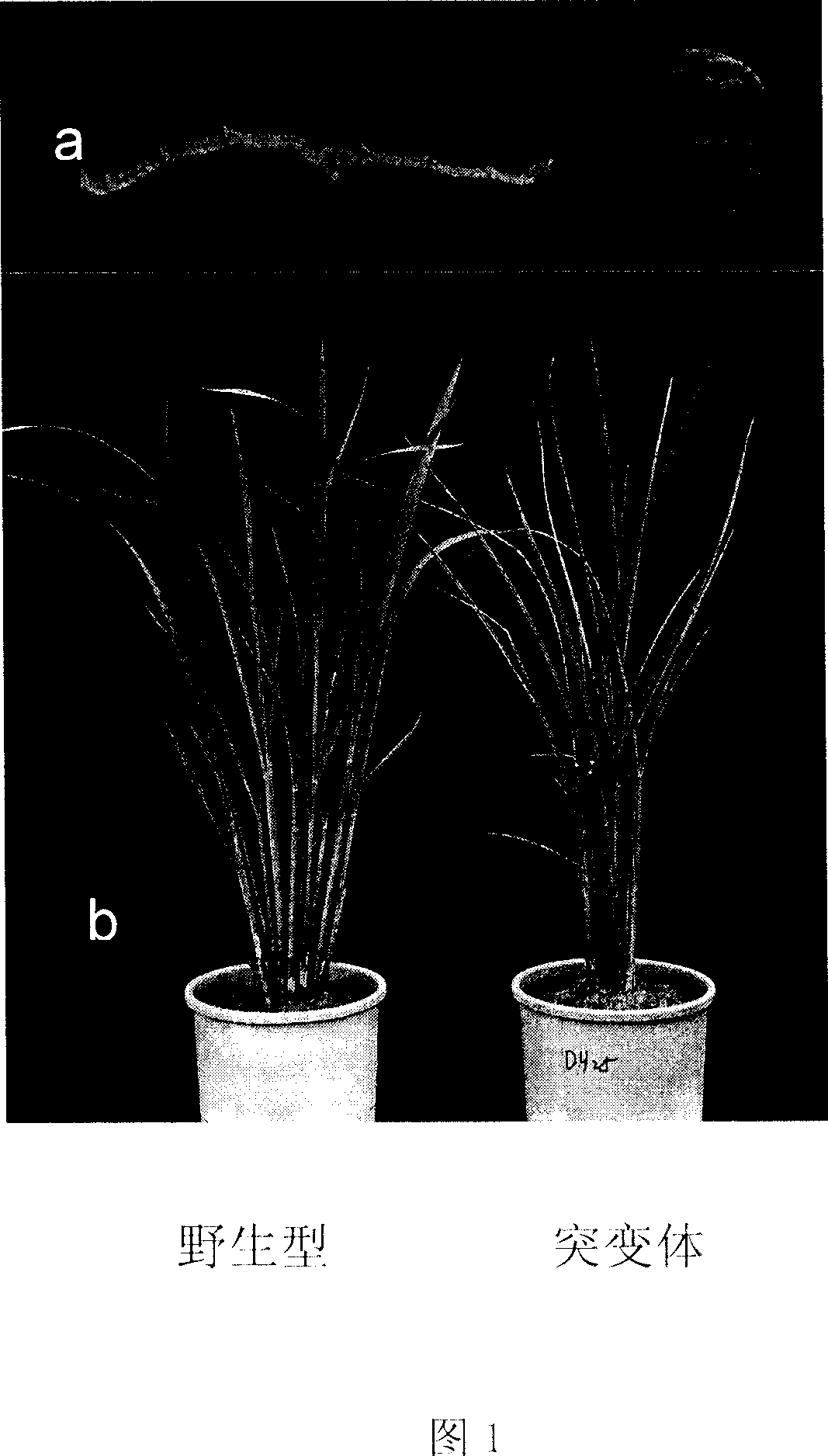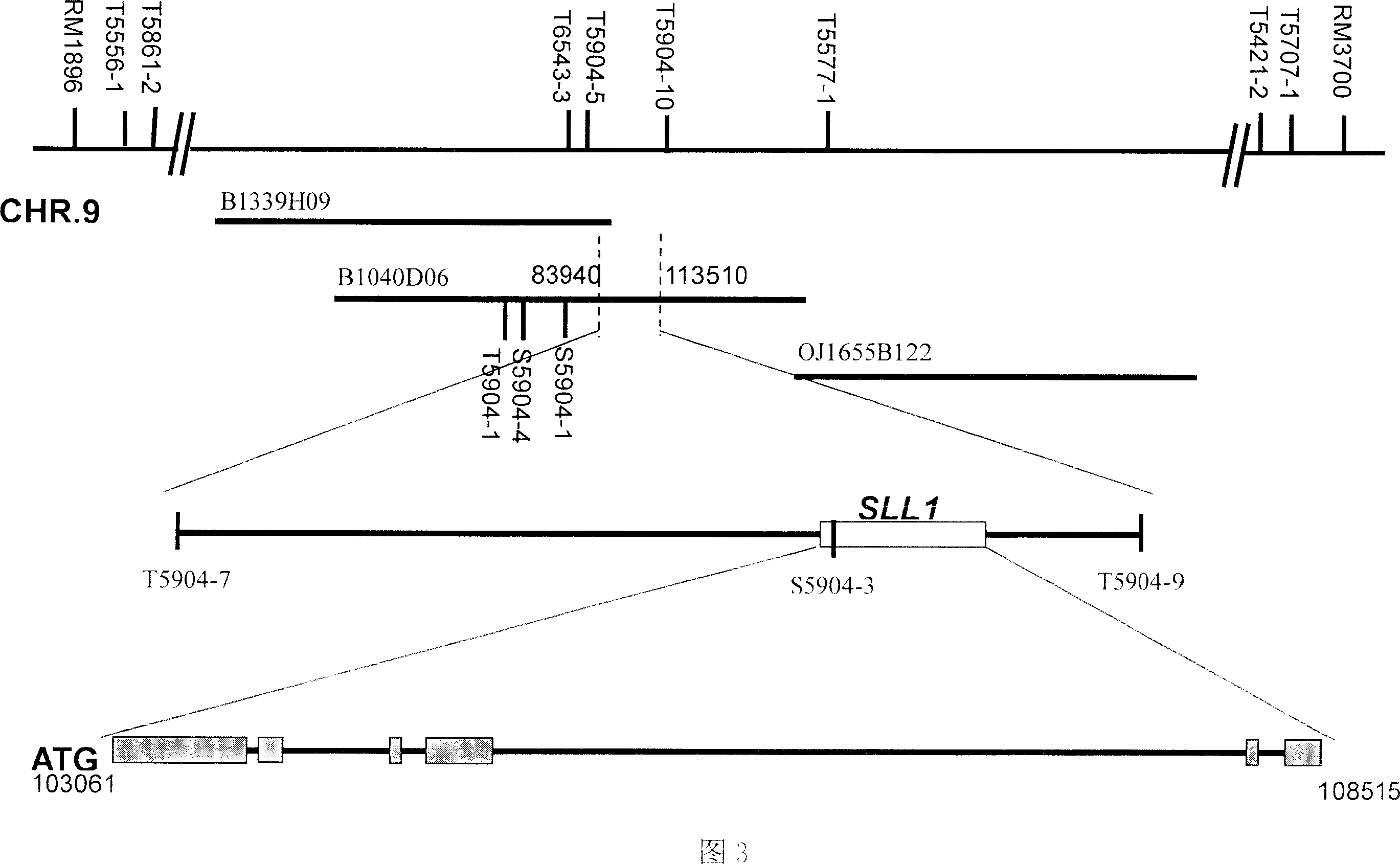Control gene of paddy leaf shape and application thereof
A gene, rice technology, applied in the fields of application, genetic engineering, plant genetic improvement, etc.
- Summary
- Abstract
- Description
- Claims
- Application Information
AI Technical Summary
Problems solved by technology
Method used
Image
Examples
Embodiment 1
[0048] 1. Rice material
[0049] Rice (Oryza sativa L.) mutant Shallot-like leaf1 (sll1), the original wild-type material is "Nipponbare" japonica rice variety.
[0050] 2. Analyze and locate groups
[0051] The homozygous sll1 mutant was crossed with the original wild-type variety Nanjing 6, and the F1 generation was selfed to obtain the F2 population, and 711 sll1 mutant individuals were selected as the mapping population. At the beginning of tillering, take about 1 gram of young leaves from each plant to extract total DNA.
[0052] 3. SSR and STS markers to locate the SLL1 gene
[0053] The rapid extraction method of rice trace DNA is used to extract genomic DNA for gene mapping from rice leaves. Take about 100 mg of rice leaves, freeze them with liquid nitrogen, grind them into a powder in a small mortar with a diameter of 5 cm, and transfer them to a 1.5 ml centrifuge tube to extract DNA. The obtained DNA precipitate is dissolved in 100 μl of ultrapure water. Use 2μl DNA samp...
Embodiment 2
[0061] Plant transformation:
[0062] The BAC clone B1040D06 was completely digested with BglII and SSe8387I. After electrophoresis, a DNA fragment of about 8KB was cut and connected to the BamHI and PstI cleavage points in the multiple cloning site of pCAMBIA1300. This DNA fragment covers the entire ORF. The genomic region also includes the 1.6KB promoter sequence upstream of ATG.
[0063] This plasmid was transformed into Agrobacterium (Agrobacterium tumefaciens) strain EHA105 to transform rice by electroporation. We use callus induced by mutant immature embryos, after 3 weeks of inducing medium culture, select vigorously growing callus as the recipient of transformation. The rice callus was infected with the EHA105 strain containing the binary plasmid vector, and after co-cultivation in the dark at 25°C for 3 days, it was cultured on a selection medium containing 40 mg / L Hygromycin. The selection of resistant callus was cultured on predifferentiation medium containing 50mg / L fo...
PUM
 Login to View More
Login to View More Abstract
Description
Claims
Application Information
 Login to View More
Login to View More - R&D
- Intellectual Property
- Life Sciences
- Materials
- Tech Scout
- Unparalleled Data Quality
- Higher Quality Content
- 60% Fewer Hallucinations
Browse by: Latest US Patents, China's latest patents, Technical Efficacy Thesaurus, Application Domain, Technology Topic, Popular Technical Reports.
© 2025 PatSnap. All rights reserved.Legal|Privacy policy|Modern Slavery Act Transparency Statement|Sitemap|About US| Contact US: help@patsnap.com



